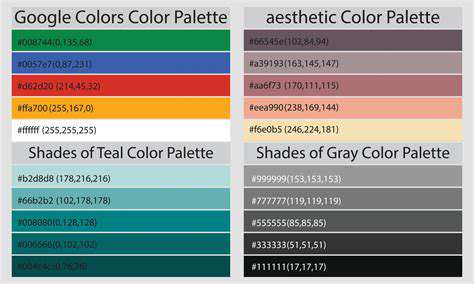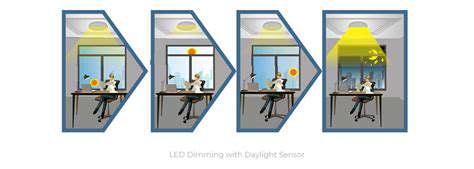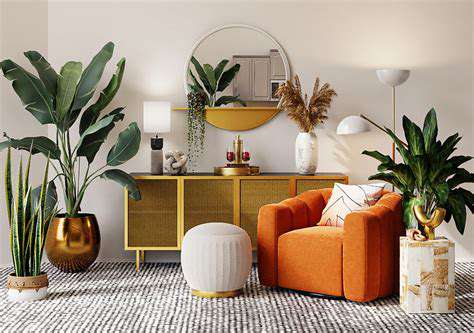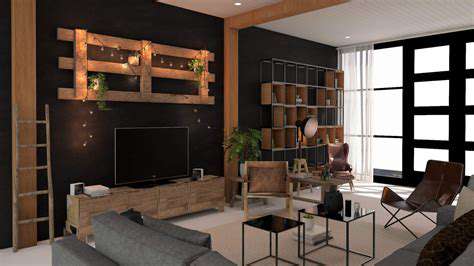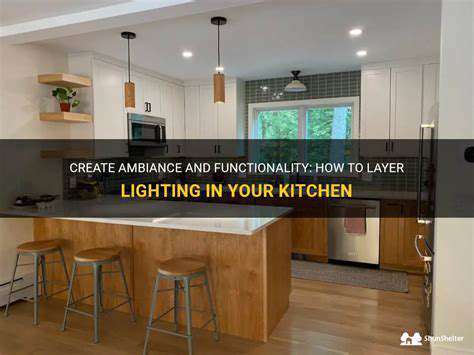How to Optimize Small Apartment Layouts Effectively
Strategic Furniture Selection and Placement
Choosing the Right Furniture
Optimizing a small apartment begins with thoughtful furniture choices. Bulky items should be avoided in favor of versatile pieces that serve multiple purposes. Take a sofa bed, for instance—it provides both seating during the day and transforms into sleeping quarters at night, making it ideal for tight spaces. Always measure your rooms before purchasing to ensure proper fit and avoid obstructing movement. Furniture with built-in storage, like ottomans with hidden compartments or beds featuring drawers underneath, helps maintain an organized, clutter-free environment.
Style shouldn't be sacrificed for functionality. A minimalist coffee table with discreet storage can enhance your decor while keeping essentials within reach. Clean-lined, contemporary designs create visual breathing room, making compact areas appear more expansive. When selecting pieces, prioritize those that align with your apartment's proportions—oversized furniture can dominate the space and disrupt its flow.
Strategic Placement for Maximum Space
How you arrange furniture is just as important as what you choose. Resist the urge to push everything against the walls; instead, leave strategic open areas to cultivate a sense of airiness. Mirrors, when positioned to reflect natural light, can dramatically amplify the perception of space. Thoughtful placement ensures smooth traffic patterns, preventing the area from feeling congested.
Define distinct zones within your apartment using area rugs. This technique visually separates living, dining, or workspaces without physical dividers. Keep pathways clear between furniture clusters to maintain an unobstructed flow, enhancing both functionality and visual appeal.
Utilizing Vertical Space
Small apartments often neglect their vertical potential. Floor-to-ceiling bookshelves or wall-mounted cabinets provide ample storage without consuming precious square footage. Opt for slender, tall furnishings that draw the eye upward, creating an illusion of height. These solutions keep floors uncluttered while maximizing every inch of available space.
Maximizing Natural Light
Light plays a pivotal role in small-space design. Arrange furniture to avoid blocking windows, allowing sunlight to permeate the room. Sheer window treatments filter light beautifully while maintaining privacy—avoid heavy drapes that darken the space. Strategic lighting placement can accentuate architectural features and establish focal points, further enhancing the room's dimensions.
Maximizing Natural Light and Color
Maximizing Natural Light
Harnessing natural light transforms small apartments, creating brightness and the illusion of space. Position mirrors opposite windows to bounce light into shadowy corners, effectively doubling its impact. Light-filtering window treatments like sheer curtains maintain privacy without sacrificing illumination. This approach not only brightens the space but fosters an inviting, open atmosphere.
Light-reflective surfaces amplify this effect. Pale walls and furnishings act as natural light diffusers, making rooms feel more expansive. This simple strategy can dramatically alter a space's perceived dimensions, turning cramped quarters into comfortable living areas.
Color Psychology in Small Spaces
Color choices profoundly influence a small apartment's ambiance. Soft neutrals and pastel tones promote tranquility and spatial openness. For visual interest, incorporate vibrant accents through accessories or artwork—these pops of color add personality without overwhelming the area. A cohesive color palette throughout creates visual harmony, making the space feel intentionally designed.
While dark hues can feel sophisticated, they tend to shrink spaces visually. If drawn to deeper tones, use them sparingly—perhaps on a single accent wall or in well-lit areas. This balanced approach allows for personal expression while preserving an airy feel.
Strategic Furniture Placement
Furniture arrangement requires careful consideration in compact living spaces. Multi-functional pieces like storage ottomans or convertible sofa beds maximize utility without crowding the area. Wall-mounted shelves replace bulky bookcases, freeing up floor space. The key lies in selecting items that serve multiple purposes while complementing your aesthetic.
Create clear circulation paths by thoughtfully positioning furniture. Avoid overcrowding—each piece should have breathing room. This intentional layout fosters both functionality and visual spaciousness, making the most of limited square footage.
Utilizing Vertical Space
When floor space is scarce, look upward. Tall storage units and wall-mounted systems capitalize on often-overlooked vertical real estate. Loft beds or high shelving not only provide storage but draw the eye upward, creating a sense of airiness. These solutions keep belongings organized while maintaining an open, uncluttered environment.
Well-designed vertical storage systems bring order to small spaces. By removing items from the floor, they create the illusion of more room while keeping essentials accessible. This approach proves particularly valuable in studio apartments or compact urban dwellings.
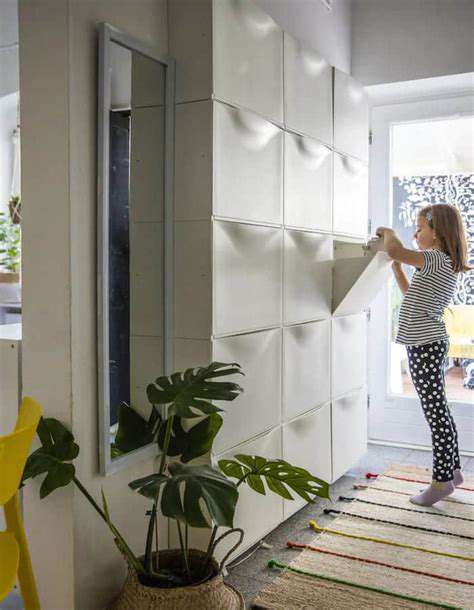
Innovative Design Solutions

Streamlined Workflow
Cutting-edge design begins with efficient processes. Identifying and eliminating workflow bottlenecks accelerates project timelines while maintaining quality. Automating repetitive tasks and establishing clear communication protocols boosts team productivity significantly. This streamlined approach results in smoother project execution and more satisfying outcomes for all stakeholders.
Well-defined workflows promote collaboration by clarifying roles and expectations. When team members understand their responsibilities, coordination improves, leading to more cohesive final products.
Enhanced User Experience
Modern design prioritizes the end-user's needs above all else. By employing user-centered design principles, creators ensure their solutions are both beautiful and intuitive. Deep understanding of the target audience allows for designs that resonate on an emotional level, creating meaningful connections between users and products.
Comprehensive user research informs every design decision. Analyzing behavior patterns and preferences leads to solutions that feel tailor-made, enhancing satisfaction and engagement.
Sustainable Practices
Contemporary design increasingly embraces environmental responsibility. From material selection to production methods, sustainability considerations shape modern solutions. Eco-conscious designs not only benefit the planet but also strengthen brand reputation among environmentally aware consumers. These practices often yield long-term cost savings while aligning with global sustainability goals.
Advanced Technologies
Innovative designers leverage cutting-edge tools to push creative boundaries. 3D modeling, virtual reality, and AI-assisted design open new possibilities for experimentation and refinement. These technologies enable the realization of concepts that were previously impossible or impractical to execute.
Data-Driven Insights
Informed design decisions stem from thorough data analysis. User feedback and performance metrics guide continuous improvement cycles. This empirical approach ensures designs evolve to meet real user needs effectively, resulting in higher engagement and satisfaction rates over time.
Future-Proofing Design
Forward-thinking solutions anticipate coming trends and technological shifts. By considering potential future developments during the design phase, creators ensure their work remains relevant for years to come. This proactive approach future-proofs investments while maintaining design integrity as needs evolve.

